lect. Ph.D arch. Cristina Victoria Ochinciuc
Ion Mincu University of Architecture and Urban Planning
Bucharest, Romania
1. Introduction
Like in your schools, we are preoccupied about ecology and bioclimatic architecture, but not in the sequential way.
How we understand the new concept of sustainability?
Do we understand like a generous umbrella?
And how we try to decode this concept in built environment?
"An increasingly complex world requires architects who can contribute to larger, more interdisciplinary teams. The world seeks architects who are community leaders and political activists with vision, who are communicators familiar with social and cultural changes, and who are adept in foreign languages to serve clients internationally. The world calls for architects skilled in available technologies, capable of linking and sharing information in a multi-media environment." (Educating Architects for a Sustainable Environment, EASE Project, Marvin Rosenman, AIA, NCARB, Director, Joseph Bilello, Ph.D., AIA January 1998)
We realized that the success of sustainability in general and sustainability in the built environment in particular is very much dependent on how institutions of higher education respond to the ideas generated as a result of widespread interest in sustainable development.
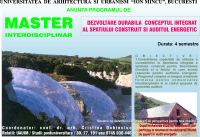
Recognizing that architecture must be a knowledge-based profession we have developed a Curricula of Master in architecture which respond on every level to issues of sustainability, energy, and the environment: "Sustainable Development – Integrated concept of built space and energetic audit".
Catalyzed by the Rio Earth Summit, sustainability emerged as an international agenda for combined global and local economic opportunity, social equity, and environmental responsibility.
The follows images (source: EASE Project) illustrate once more that integrated design will be an obligation in the future.
A long way and full of substance separated Johannesburg from Rio. Comparable models of LA 21 were being developed in different countries. But Johannesburg wasn’t a place of analyses of these AL 21; the discussions focused on the partnerships, and poverty, vulnerability and environmental change.
"Poverty is a major cause and effect of global environmental problems. It is therefore futile to attempt to deal with environmental problems without a broader perspective that encompasses the factors underlying world poverty and international inequality." (World Commission on Environment and Development, 1987)
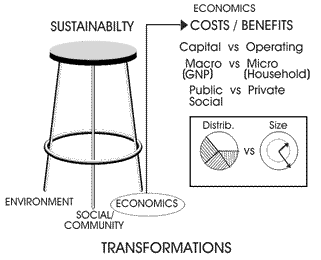
The three-legged stool of sustainability
Many of our students are raised and educated to separate values, keep them isolated from each other to preserve separate worlds.
"We value each thing on its own merits, not its totality. A building is liked for representing stunning esthetic quality and forgiven other undesirable attributes. Alternatively, sustainability has both values and metrics with an ethic based on well-being of the human and biosphere community." (EASE Project)
On the other hand, if we apply the principles of sustainability we must think and act in ecosystem terms: people became a resource.
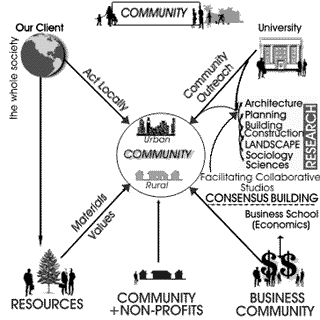
Model for interdisciplinary collaborative community-focused design
2. Individual activities of faculty, students, or citizens are places of greatest potential innovation
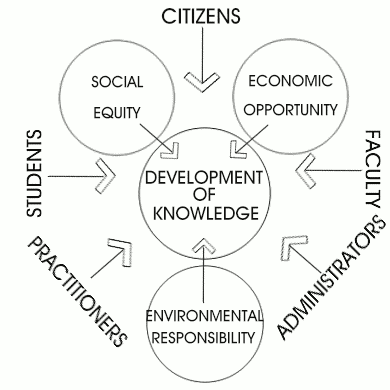
Free of institutional structures or group processes, individuals can reflect and act to innovate with greatest flexibility.
Students might work at more innovative models of human productivity than their institution could readily implement.
I will refer now to two important activities in our "school" and these refer to two important problems of our society. One of theme is the rural poor (after 1989 each rural community try to adapted to the new type of economy in opposite with the totalitarian one).
Another one is the problem of urban people. They are paying too much for the maintenance of non-qualitative apartments in the enormous residential districts of block of flats. The great consume of energy is the principal aspect.
The first application was realized in the context offered by the University of Bucharest. The Faculty of Geology and Geophysics, and "Geomedia" Center developed a real LA 21 for the rural communities who lived inside Natural Park of Hateg. Here it is the archaeological site of Sarmisegetusa (Roman Castrum) and the village with the same name, and here were discovered the famous dinosaurian nests.
3. The interdisciplinary summer practice
Our students from Faculty of Urban Planning, Landscape Design Section are involved in an architectural way in the interdisciplinary summer practice. In the first year they identified the architectural patrimony of Sarmisegetusa (Clopotiva, Densus etc.), and the vernacular architecture principal specific features (see Convention for Cultural Landscape, Turin 2000). It came out that a great part of the new buildings (dwellings or houses for holiday) ignore the local specific. It came out the tendency to demolish the old, vernacular buildings. We will think to a regional guide of architecture and a green building program to encourage the development of zone like an agro-tourist homes zone.
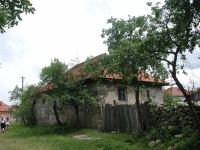
In the second year our students’ proposal was to develop a strategy to help the community of Sarmisegetusa. The tourists come here to visit the archeological site, then they go away without know nothing about de interesting architecture in stone and wood of the Sarmisegetusa village, and it’s tradition. On the other hand all household from this village have a particularity: much then 60% of the fence which separate the courtyard from street is the stonewall (or wood structure) of a storehouse which lost in the present the initial function.
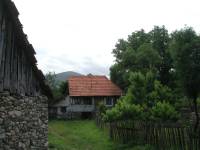
The students of the Faculty of Sociology developed the next application. They realized the interview with the owners, and they learned about their intentions. We know that is very hard to mortgage the house for a credit to develop a business.
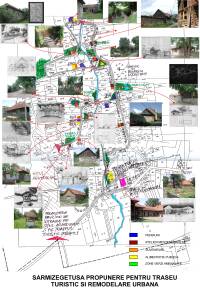
|
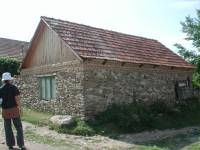
|
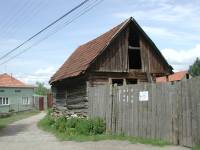 |
|
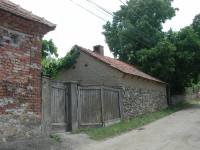 |
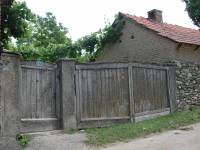 |
So, together our Universities and the Local Administration intend to think to another project to encourage in a material way the community initiative.
4. Façades used as envelope surfaces – from weather protection to renewable energy technologies
Strategies such as proper sitting and airtight construction, as well as installing energy-efficient equipment and appliances and renewable energy systems will reduce the amount of energy a building needs to operate and to keep its occupants comfortable.
Recent, our University together with the INCERC - National Building Research Institute2 from, Bucharest were involved in a national research. As architects and engineers, we live in an era, which not only challenges us to develop new ideas but also virtually cries out for innovative concepts. The aim is not only to create a new generation of buildings, which are energy efficient, high, quality, affordable and environmentally sustainable but also to realize targeted energy conservation based on the corresponding environmental options in old-building renovations. The chief objective of this project will be to make optimal use of sunlight to bring heat energy into the building, and to heat household water.
An experimental "solar space" will be realized: will be a combination between TIM (transparent insulating materials) and solar absorber.
The first part of the research was for documentation. This provides an overview of current, marketable, renewable energy technologies. It also clarifies which technologies are market-ready in the world and which are ready but currently rarely implemented. It becomes clear that many of these technologies are still in the development phase, and others require further research.
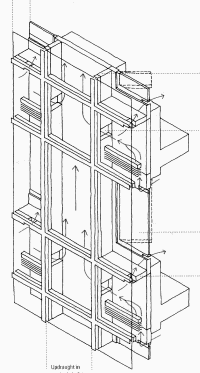
Twin face Façades, Alco Systems GmbH, Munster, Germany - Well-suited to buildings less than ten stories high and utilizing the stack ventilation (source of images: The Technology of Ecological Building, Klaus Daniels, 1997 Birkhauser – Verlag fur Architektur)
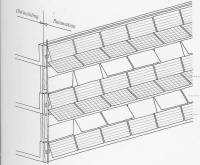
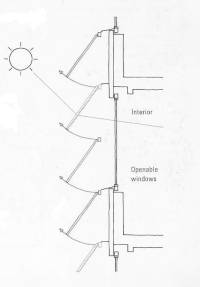
Second skin Façade, Schmidlin AG (Façade Planning)
A façade created by architects Herzog + de Meuron in Basle
The structural design of the double-leaf façade – three different service bands for light bending, for ventilation and viewing, and for generating solar power (pfotovoltaic)
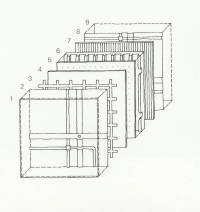
The Concept of Polyvalent Walls - Proposal by Mike Davis (Richard Rogers partnership, London)
- Silica weather skin and deposition substrate
- Sensor and control logic layer, external
- Photoelectric grid
- Thermal sheet radiator/selective absorber
- Electro-reflective deposition
- Micro-pore gas flow layers
- Electro-reflective deposition
- Sensor and control logic layer, internal
- Silica deposition substrate and inner skin
This polyvalent wall should be so design that it will, depending upon user specification and season, function as shading or heat insulation, reflect heat energy outside the building or bring heat energy into the building, and open and close itself automatically.
The manufacturing industry has been unable to transform M. Davis ideas into reality.
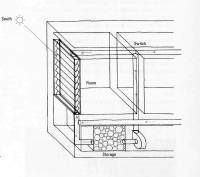
Window Collector Panels – are glazed box elements in which solar energy is transformed into heat and transmitted as heated air to a storage unit inside the building
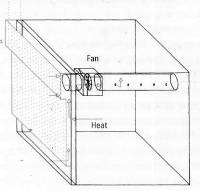
Air Collector Panels – are cost – efficient addition to warm-air heating systems When solar energy is used, e.g. in atria, where the intake air is directly heated by air collectors, during corresponding radiation, and then blow into the atria
5. A Final Conclusion - The move towards new ‘Cost’ metrics: LCC+LCA
A number of architects, engineers, and construction engineers are actively supporting significant trends for the development and design of future buildings. It becomes clear that Green buildings are achieved through an integrated activity of the team of actors involved in the process of programming, designing, construction, use and recycling of the facility.
Integrated design systems are becoming more common place in the building engineering domain. Technical building systems are the prime application fields of integrated design approaches. The aim is to support collaboration between owner, designers, part manufacturers and engineers, usually referred to as 'co-engineering' where architectural designers and engineers work jointly towards better technical solutions. Optimal co-engineering will be enabled by better coordination of the search and specification of technical solutions through the different process stages (design, manufacturing, construction and site assembly and maintenance).
Future buildings will actively involve the adoption of life cycle, whole cost accounting based on economic and ecological value systems, accelerating the use of sustainable technologies and establishing the concepts of system engineering in all phases of building design, construction, financing, and operation. The move to new ways of measuring costs will also serve to educate the public about the true costs of a building's ownership, occupancy and operation, along with the energy and non-energy contributions that a properly designed building can make to productivity, personal health, comfort and sustainability. New metrics will be based on a combination of life cycle cost (LCC) and environmental life cycle assessment (LCA), with the potential of beginning a new era of cooperation in community planning, construction, financing, and the establishment of affordable housing.